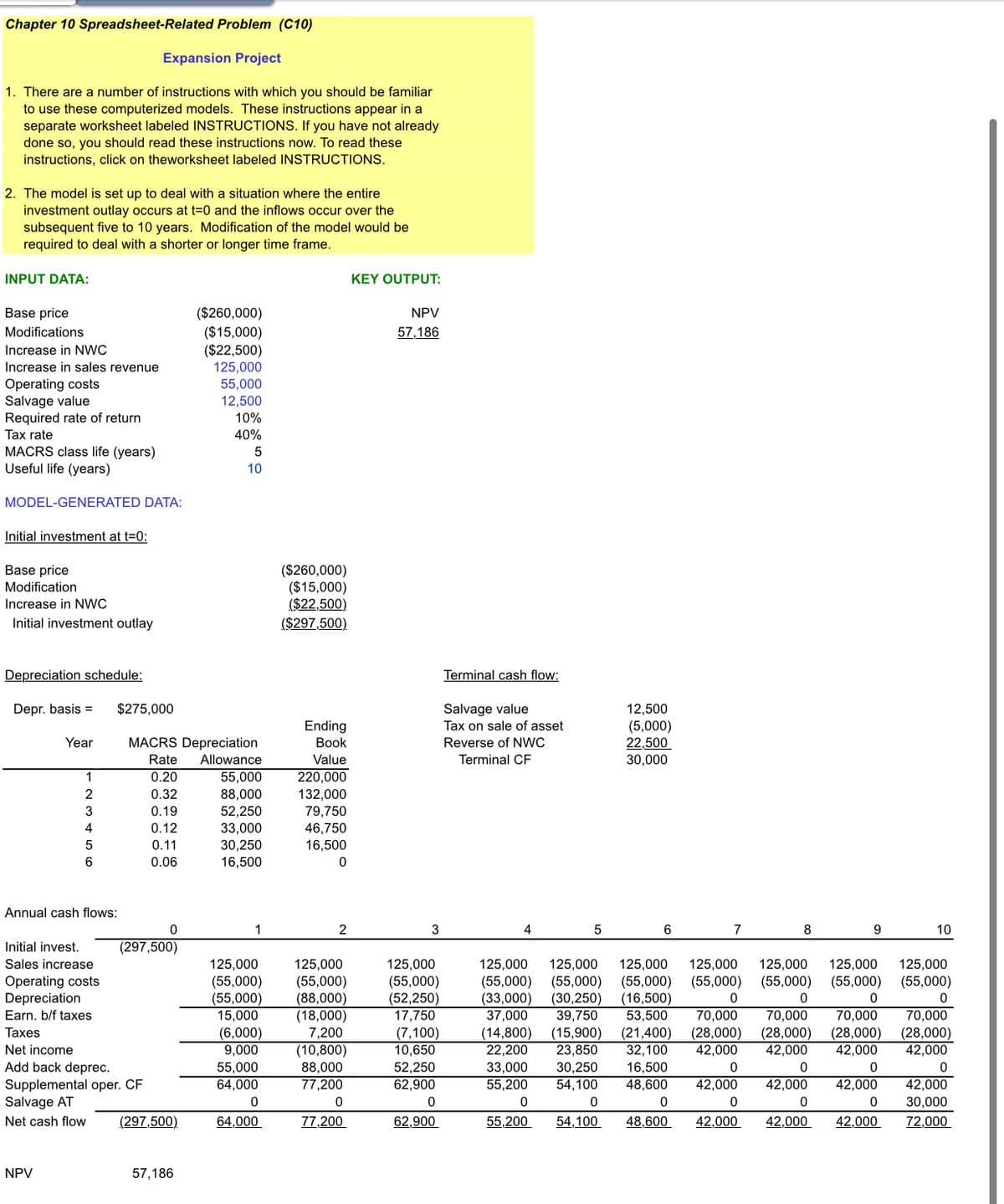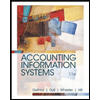Percentages need to be entered in decimal format, for instance 3% would be entered as .03. Golden State Bakers, Inc. (GSB) has an opportunity to invest in a new dough machine. GSB needs more productive capacity, so the new machine will not replace an existing machine. The new machine is priced at $260,000 and will require modifications costing $15,000. The machine has an expected useful life of 10 years, will be depreciated using the MACRS method over its 5-year class life, and has an expected salvage value of $12,500 at the end of Year 10. (See Table 10A.2 for MACRS recovery allowance percentages on page 184 in the textbook.) The machine will require a $22,500 investment in net working capital (NWC). The machine is expected to generate additional sales revenues of $125,000 per year, but its use also will increase annual cash operating expenses by $55,000. GSB's required rate of return is 10%, and its marginal tax rate is 40%. The machine's book value at the end of Year 10 be $0, so GSB will have to pay taxes on the $12,500 salvage value. (This information is shown on the spreadsheet provided.) Based on the information in the spreadsheet, what is the NPV for of this expansion project? Should GSB purchase the new machine? Why or why not? Should GSB purchase the new machine if it is expected to be used for only five years and then sold for $31,250? Why or why not? (Note that the model on the spreadsheet is already set up to handle a five-year life; you need enter only the new live and salvage value.) Would the machine be profitable if revenues increased by only $105,000 per year? Assume a 10-year project life and a salvage value of $12,500. Explain your answer. Suppose that revenues rose by $125,000, but expenses (operating costs) were $65,000. Would the machine be acceptable under these conditions? Assume a 10-year project life and a salvage value of $12,500. Explain your answer. Suppose the revenues rose by $100,000, but expenses (operating costs) were $45,000. Would the machine be acceptable under these conditions? Assume a 10-year project life and a salvage value of $12,500. Explain your answer
Percentages need to be entered in decimal format, for instance 3% would be entered as .03.
Golden State Bakers, Inc. (GSB) has an opportunity to invest in a new dough machine. GSB needs more productive capacity, so the new machine will not replace an existing machine. The new machine is priced at $260,000 and will require modifications costing $15,000. The machine has an expected useful life of 10 years, will be
- Based on the information in the spreadsheet, what is the
NPV for of this expansion project? Should GSB purchase the new machine? Why or why not? - Should GSB purchase the new machine if it is expected to be used for only five years and then sold for $31,250? Why or why not? (Note that the model on the spreadsheet is already set up to handle a five-year life; you need enter only the new live and salvage value.)
- Would the machine be profitable if revenues increased by only $105,000 per year? Assume a 10-year project life and a salvage value of $12,500. Explain your answer.
- Suppose that revenues rose by $125,000, but expenses (operating costs) were $65,000. Would the machine be acceptable under these conditions? Assume a 10-year project life and a salvage value of $12,500. Explain your answer.
- Suppose the revenues rose by $100,000, but expenses (operating costs) were $45,000. Would the machine be acceptable under these conditions? Assume a 10-year project life and a salvage value of $12,500. Explain your answer

Trending now
This is a popular solution!
Step by step
Solved in 4 steps with 6 images


